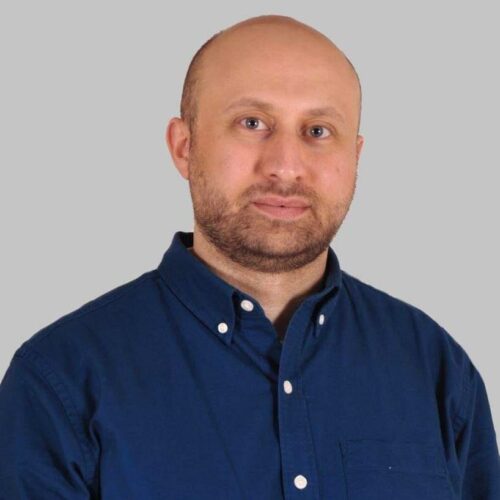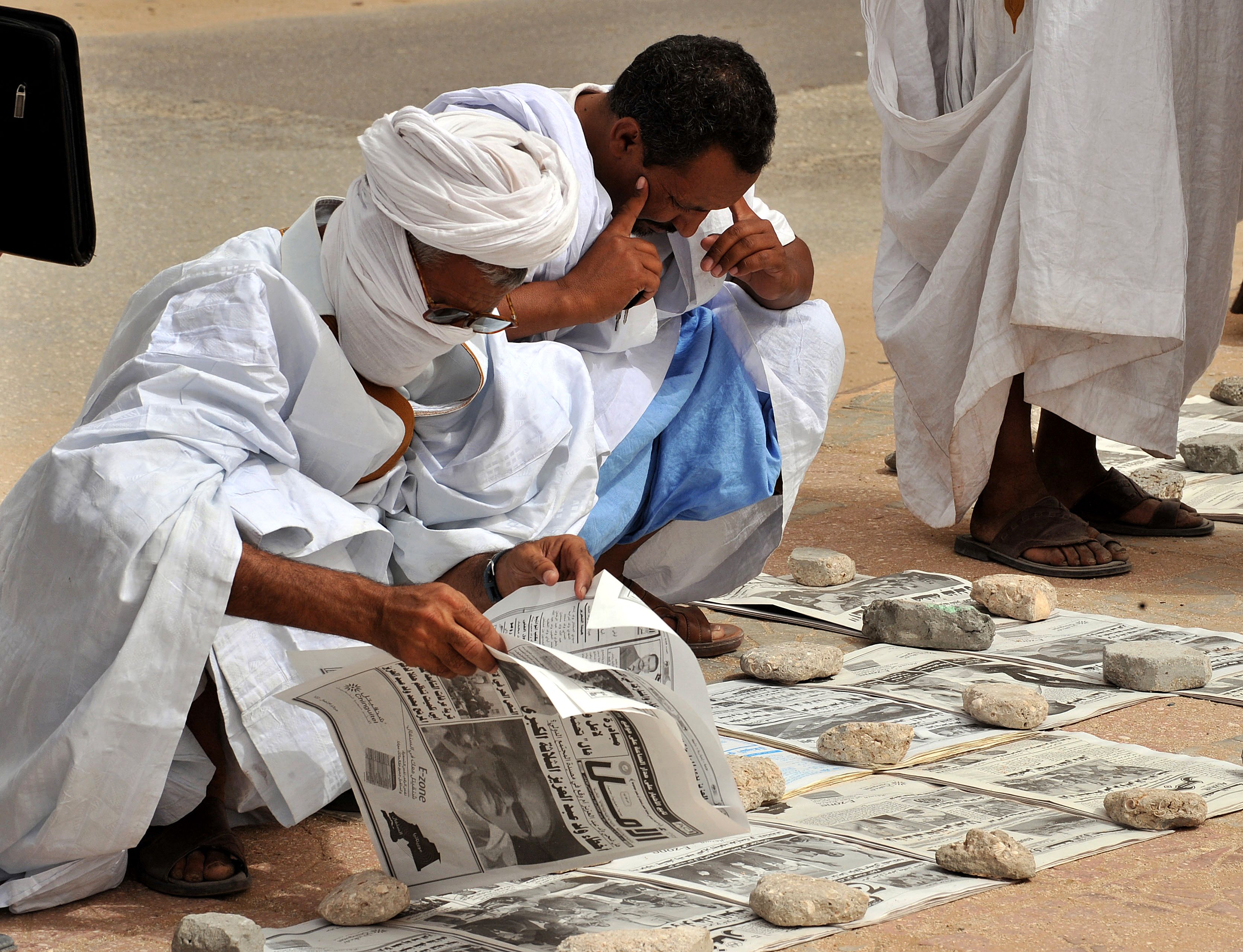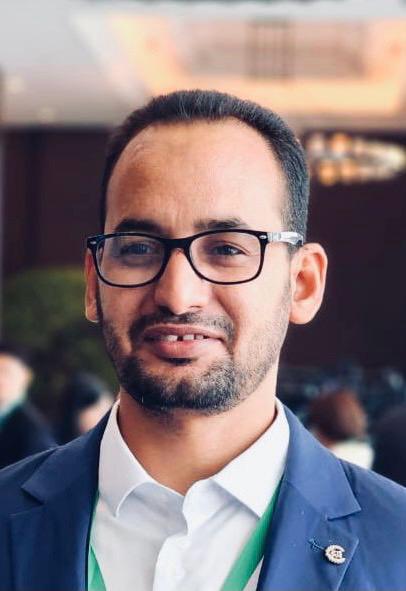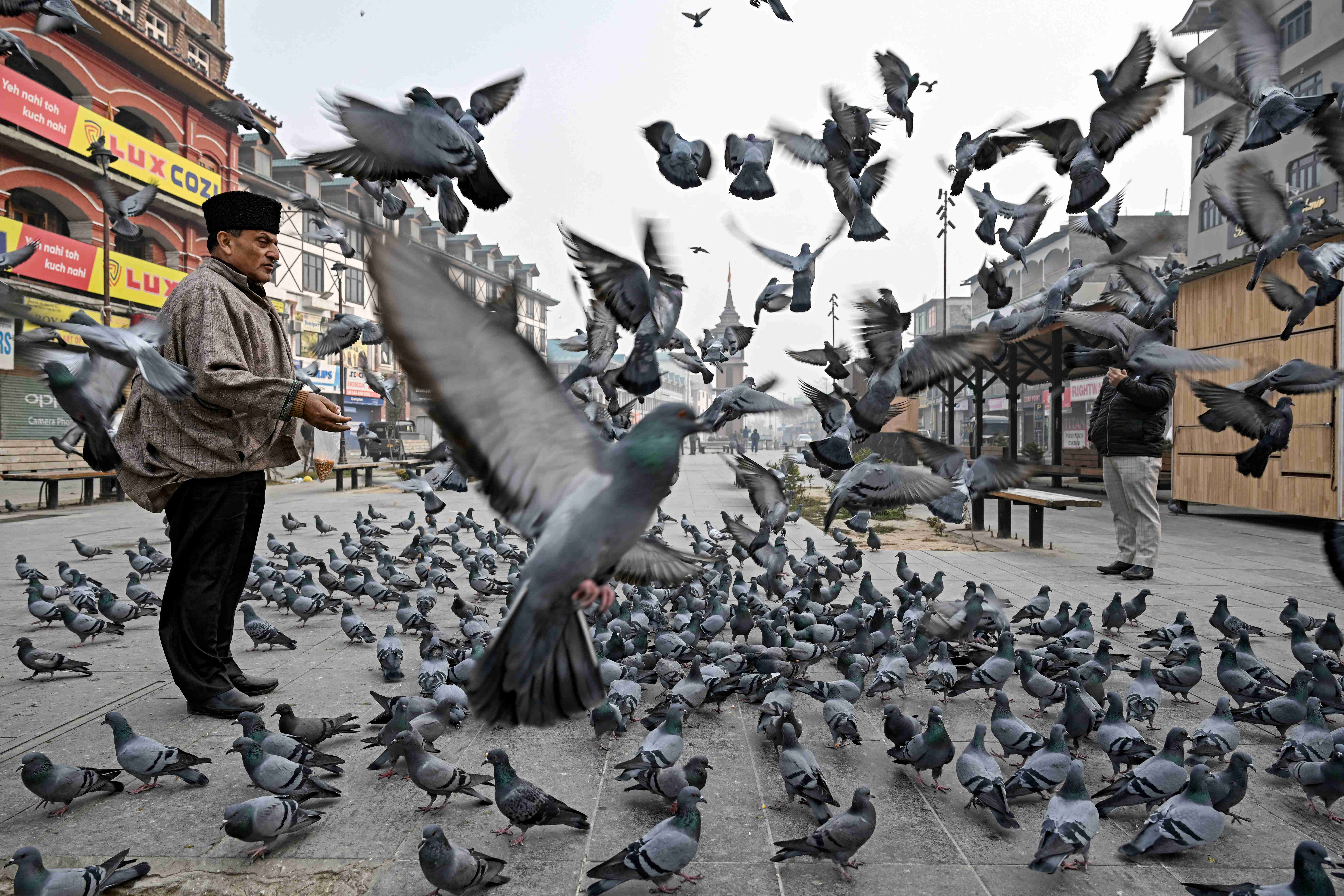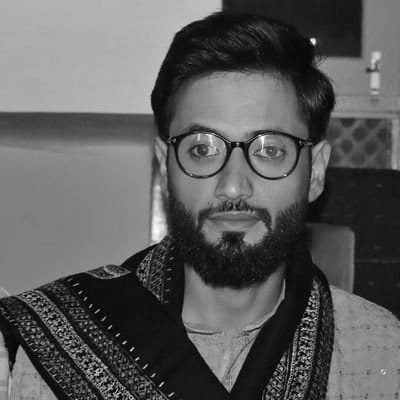لعل أقسى ما يمكن أن يصل الإنسان من أخبار أينما كان يعيش على سطح هذا الكوكب، هو فقدان أخٍ أو قريبٍ أو سند. في تلك اللحظات يفقد العقل السيطرة تماماً، وتصبح التصرفات مرهونةً بالعاطفة فقط، فإذا مضى الوقت نسيَ تفاصيل "اللا إدراك" تلك، واحتفظ بصورة "حزنه" ذاك نقياً.. إلا إذا وثقت الكاميرا تلك اللحظة، وأبقت عليها حيّة، فإنها تلاحق صاحبها طوال العمر.
في فلسطين، وعلى الرغم من كلّ النتائج الإيجابية التي حققها الصحفيون في تغطياتهم على مدار السنوات الطويلة الماضية، فإنهم يرتكبون بعض الانتهاكات المهنية في لحظات وداع الشهداء، تُفسد في أوقاتٍ كثيرة الرسالة الصحفية التي تسمو فيها الإنسانية.
نظرةٌ بسيطة على بعض الصور الملتقطة خلال الجنازات في فلسطين، ولعل آخرها جنازات شهداء مسيرات العودة وكسر الحصار، وسنرى أن الكثير منها يحمل في تفاصيله انتهاكات لقدسية اللحظة وللمشاعر الإنسانية حتّى، فتلك سقط عنها حجابها وهي تبكي، وذاك أغمي عليه، وأخرى كانت تتلفظ بما لا تعي ولا تدرك، وآخر منعه اكتظاظ الصحفيين من أن يودع أخيه.
هناك الكثير من مثل هذه الصور الأليمة إذا ما استرجعها العقل، فكيف ونحن نتحدث عن توثيقها إلى عمرٍ آخر؟ حاولنا توثيق بعض المشاهد لتجاوزات مهنية قام بها بعض الصحفيين في لحظاتِ وداع شهداء ارتقوا في قطاع غزّة.
مشاهد متعددة
البداية من الجمعة الرابعة لمسيرات العودة وكسر الحصار، إذ ارتقى فيها شهيد في شمال قطاع غزة، يومها سمح أقارب الشهيد للصحفيين بدخول المنزل وقت وداع النساء وتصوير تلك المشاهد، سببت الصور التي نشرت على وسائل التواصل الاجتماعي، مشاكل لأهل الشهيد، خاصة أنها احتوت على مشاهد خاصة للنساء وقد سقطت أغطية رؤوسهن خلال التشييع.
وفي موقف آخر، زار عدد من الصحفيين، بعد إلحاح شديد، والدة الطفل محمد أيوب الذي استشهد في نهاية أبريل/نيسان الماضي في القطاع، وبينما كانت الأم تستذكر طفلها وبعض مواقفه، أخرجت هاتفها المحمول لتُقلب في صوره وتبكي بحرقةٍ شديدة، وفجأة التقط أحد الصحفيين هاتف الأم عنوةً وأخذ يشاهد الصور، محاولًا نقلها إلى هاتفه، إلى أن قامت بالصراخ عليه وطرده من المنزل.
يعلق المصور زكريا أبو هربيد على الحادثة بالقول "كثير من عائلات الشهداء ترفض دخول الصحفيين للتغطية والتصوير داخل المنازل، لأنّ للبيت خصوصيته وحرمته داخل المجتمع الغزّي، فمن وجهة نظرهم لا يحق للصحفيين التعدي على حرمة البيت وتصوير أفراده في مشاهد قد تكون غير ملائمة بتاتاً".
ويتابع أن "بعض الصحفيين يحاولون بطرقٍ عديدة إقناع أهالي الشهداء بضرورة التصوير، من خلال شرح الأثر الذي يمكن أن تتركه الصورة إذا ما كانت تؤثر على الصعيدين العربي والعالمي"، مشيراً إلى أنّ بعض العائلات تستجيب للصحفيين، بينما البعض الآخر يرفض التجاوب معهم، وقد يصل الأمر أحياناً إلى وقوع مشاكل بين الطرفين إذا ما أصر الصحفيون على مطلبهم.
ويرى أبو هربيد أنه في الحالات التي يسمح فيها للمصورين الصحفيين دخول بيوت الضحايا، وأن من الضروري أن يكون الصحفي رقيباً على ذاته وقادراً على احترام خصوصية المشهد، مضيفاً أنه "لا يجوز تصوير النساء اللواتي سقطت الأغطية عن رؤوسهن، ولا يجوز لنا كمصورين صحفيين إخراج أيّ صورة تظهر فيها النساء وهنّ منفعلات وفاقدات للوعي، لأنّ الصور ستظل تلاحق أصحابها".
ويشير إلى أنّه يتفهم طبيعة عمل وكالات الأنباء التي ترغب في التركيز على الصورة الإنسانية التفاعلية، لكنّه يرى أنّ هذا الأمر يجب أن يكون خاضعًا لأسس مهنية وأخلاقية بالأساس، ويجب أن يكون مراعيًا لطبيعة المجتمع وتفاصيل الحياة فيه.
انتهاك للخصوصية
معدّ هذا التقرير أثناء بحثه في الموضوع، توصل إلى عدد من المواقف الأخرى التي أفرزتها ممارسات صحفية ميدانية غير مهنية لبعض الصحفيين، "مع التحفظ على ذكر أسماء الأشخاص الذين رووا تلك المواقف". قصةٌ ذكرها لنا أحد الصحفيين في مدينة غزة، أن مصورا صحفيا وصل متأخرا لتغطية جنازة أحد شهداء مسيرة العودة الكبرى، فلم يستطع التقاط صور للجثمان أثناء إلقاء نظرة الوداع عليه من قِبَل أهله داخل البيت. في ذلك الوقت وبعد أن خرجت الجنازة من البيت، ذهب الصحفي باتجاه أحد أقرباء الشهيد، وسأله عن إمكانية إعادة الجثمان إلى البيت لإلقاء نظرة وداع أخرى عليه، وهو ما أثار حفيظة الرجل الذي أدهشته جرأة الصحفي وعدم مبالاته بمشاعر العائلة، على حد قوله.
صحفي آخر قال لنا إنّه شاهد عددا من الصحفيين في جنازةٍ لطفلةٍ صغيرة من شرق مدينة غزّة استشهدت أثناء قصفٍ إسرائيلي؛ وهم يطلبون من عائلة الطفلة تغيير اتجاه النعش وإبعاد الجنازة قدر الإمكان عن أشعة الشمس ليتمكنوا من التقاط صور ذات جودة عالية.
الأمر لم يقف عند هذا الحد كما يوضح، إذ وصل تمادي الصحفيين في طلباتهم حتى وصل الحال بأحدهم أن يحاول إيقاف الجنازة حتى يحصل على صورته، وهنا كادت تقع مشكلة كبيرة بين الصحفيين وأهل الطفلة الشهيدة الذين سرعان ما أبعدوا معظم الصحفيين عن المكان بالقوة.
تأهيل مهني وأخلاقي
مستشار مركز تطوير الإعلام التابع لجامعة بيرزيت فتحي صبّاح يبيّن أنّ مهمة الصحفي هي نقل الواقع كما هو، والحالة التي تكون فيها الأم لحظة استشهاد ابنها أو الزوجة لحظة وداع زوجها، تكون كافية لشرح الموقف وبيانه. فما الحاجة إلى التصنع الذي يحاول بعض الصحفيين افتعاله عبر إثارة مشكلات وطلب طلبات غريبة من أهالي الضحايا، مضيفا "الصحفيون يعتقدون أنّهم بهذا الفعل يحصّلون سبقا، وفي الحقيقة هم يخسرون كثيرًا من ثقة الجمهور، ويساهمون في تكوين صورة سلبية عن طبيعة العمل الصحفي، الأمر الذي يترك انطباعات غير لائقة عند المواطنين".
ويشير إلى أن بعض الصحفيين -خاصّة في قطاع غزّة- بحاجة إلى إعادة تأهيل مهني وأخلاقي، لأن الكثير من العاملين في المجال الصحفي غير خاضعين للتدريبات الكافية وغير دارسين للصحافة والإعلام، فهم بذلك جاهلون بالأسس المهنية ويعتقدون أنّ الصحافة هي التقاط صورة ونشرها فقط.
ويفرق صبّاح بين الصورة العاطفية التي تجلب الاهتمام العالمي والتعاطف الإنساني بشكل حقيقي، وبين الصورة التي يعتقد الصحفيون أنّها صورة إنسانية تجلب هذا التعاطف، فالأولى يمكن تحقيقها بصورة قديمة لطفلٍ شهيد وهو يلعب الكرة أو في المدرسة، والثانية في الأساس تكون مرتبطة بمشاهد عفوية لا يرغب أهالي الضحايا في نشرها ورؤيتها، فهي تخالف قاعدة أساسية من القواعد المهنية التي ترى وجوب رضى صاحب الصورة عنها وضرورة استئذانه قبل النشر.
من الناحية القانونية
ويرى الباحث في المركز الفلسطيني لحقوق الإنسان محمد أبو هاشم أن المشكلة الأساسية التي تفرز مثل هذه الممارسات، هي عدم وجود قانون ناظم يُوضح آليات العمل التي يجب على الصحفيين أن يعملوا في إطارها، ويكونوا على علمٍ بأنهم سيحاسَبون قانونيًا إذا ما ارتكبوا مخالفات وانتهكوا خصوصيات الآخرين.
ويقول إن "القانون الفلسطيني لم يحدد القالب أو الشكل الذي على الصحفي أن يلتزم به أثناء التصوير في الأماكن العامّة، وبالنسبة للأماكن الخاصّة -سواء كانت مغلقة أو مفتوحة- فالتصوير فيها ممنوع إلا بالإذن من صاحب المكان، بموجب التعديلات القانونية في قانون العقوبات الفلسطيني".
أمّا بالنسبة للقانون الدولي فيذكر أبو هاشم أنه فتح المجال أمام القوانين المحلية بإضافة مواد وتعديلات تساهم في الرفع من حالة المحافظة على خصوصية الأفراد داخل المجتمعات.
ويشير إلى أن القانون الفلسطيني يكفل حق الأشخاص الذين يتعرضون لأضرار بسبب صور نشرت لهم دون إذنٍ مسبق، موضحًا أنّه في هذه الحالة يحق لصاحب الصورة رفع قضية مدنية على المصور والمطالبة بتعويضٍ مقابل الضرر الذي أصابه.
ختامًا، وجب علينا القول إن أجزاء من الحالة الإعلامية الفلسطينية صار يُعبر عنها من خلال تصرفات فردية وعواطف شخصية محركها الأساسي هو البحث عن السبق والشهرة، دون النظر إلى الأصول والقواعد المهنية والسلوكية الناظمة لأي هامش من هوامش العمل الصحفي.
والسؤال الذي يطرح نفسه هنا: هل أصبح الهدف الأكبر لدى بعض الصحفيين هو الانتشار؟ وهل أضحى الطريق للانتشار هو ضرب القواعد المهنية الصحفية وانتهاج أسلوب الصحافة الصفراء في المعالجة الصحفية للأحداث؟



